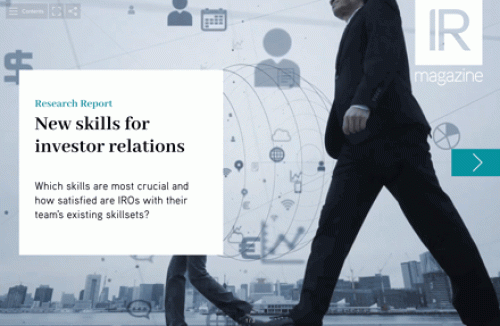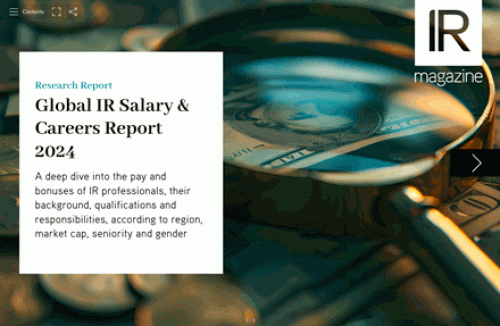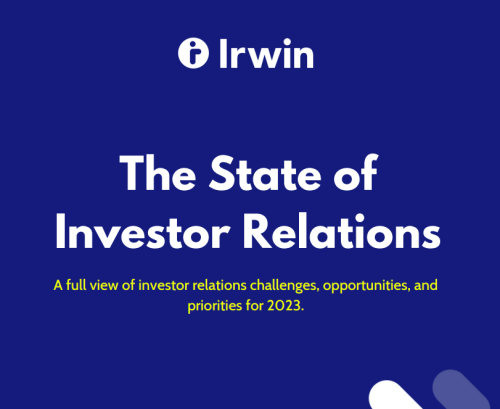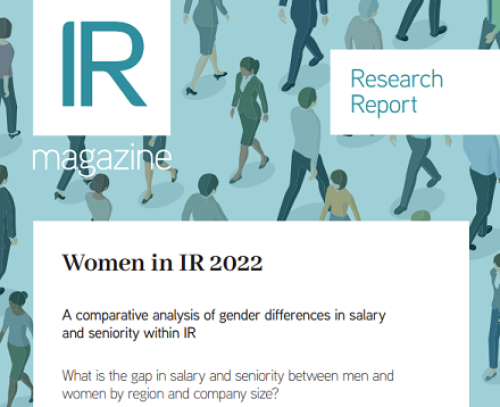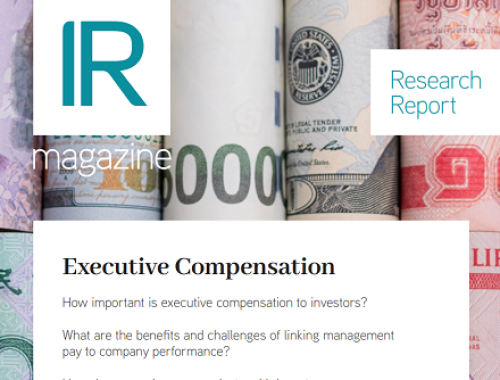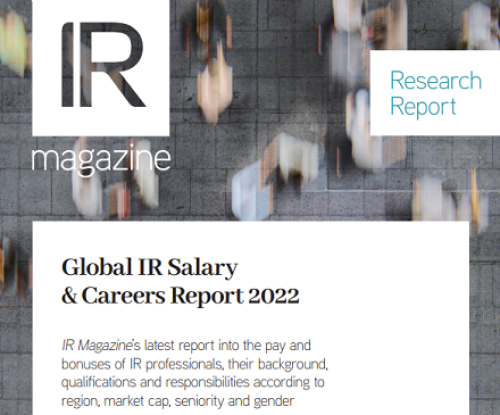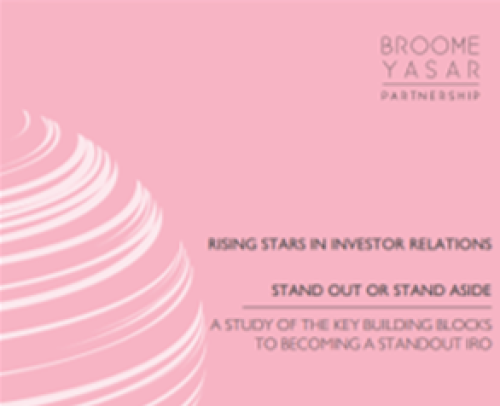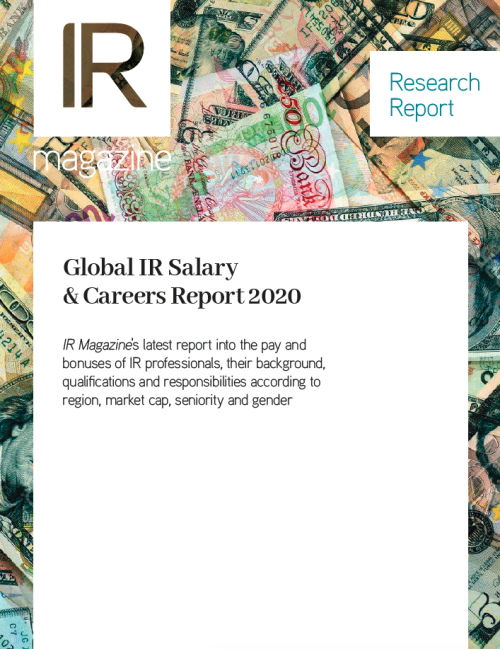Established 60 years ago and having completed its debut on the Saudi stock exchange in 2022, Arabian Drilling is the largest drilling contractor in Saudi Arabia and, with a market capitalization of more than $4 bn, is also one of the largest companies in the region.
In this interview with IR Magazine, the firm’s CFO, Hubert Lafeuille, talks about the challenges and lessons learned in taking the company through its listing process and establishing the IR function with no previous experience in investor relations.

Can you give us some background on your tenure at Arabian Drilling and your role in the company’s IPO in 2022?
I joined Arabian Drilling as CFO in 2020. After two years in the job, the decision to list came unexpectedly. Historically, the company had two major shareholders: SLB (formerly known as Schlumberger) and the Industrialization & Energy Service Company, which is a Saudi conglomerate known as TAQA. At the time these two shareholders decided to partially to sell their shareholding to the market, which meant a secondary offering. From there, the decision was made to issue new shares (the primary offering) to allow Arabian Drilling to raise cash.
When the IPO came around, we were in a growth cycle, so we thought it was the right time to also initiate a primary offering to finance further expansion. This was my first experience of an IPO; I had never been in a fully fledged CFO role before joining Arabian Drilling. My role during the IPO was to put together a very crisp, comprehensible and compelling equity story and sell the value proposition to investors. In addition, during the IPO process I was involved in all the pre-IPO roadshow work. It was an intense exercise.
Did you already have an IR function pre-IPO, or did you establish one when you decided to go public?
We had to build the IR function from scratch in 12 months – that was probably the biggest challenge. Today we have an IR team of two: me and Raed Maharmeh, who is head of IR and treasury. We handle most of the IR-related tasks, including investor communications, presentations, earning calls, various meetings and so forth. As we don’t have any previous experience in IR, we also work with an IR consulting firm in Dubai that helps us to ensure we deliver a compelling company narrative.
How would you describe the business landscape and IR community in Saudi Arabia, and what it’s like to list on such a young stock exchange?
Like everything else in Saudi Arabia, the business landscape is rapidly evolving, mirroring the activity seen on the country’s stock exchange, with numerous IPOs over the past few years. This influx marks a positive trend as companies introduce best practices that may be seen as common in mature markets but are new to Saudi Arabia.
For example, I was recently asked how long it took Arabian Drilling to decide that, once listed, we would commit to quarterly earnings calls. For me it was not even a question; it was obvious that as we went public, we would engage quarterly. I was surprised but realized that if you look at the companies listed in Saudi Arabia, only 20 percent to 25 percent hold quarterly earning calls. This highlights that there is significant room for improvement – but change is swift, reflecting the broader transformation occurring across the Saudi business scene.
As the largest drilling contractor in Saudi Arabia, how is Arabian Drilling addressing ESG issues to ensure sustainable operations and meet investor expectations?
Our focus is on unconventional gas drilling, which is similar to shale gas extraction in the US, and contributes significantly to Saudi Arabia’s energy mix transition. That transition aligns with Saudi Vision 2030, aiming to replace fossil fuel-based electricity generation with gas turbines, facilitating decarbonization.
Additionally, our involvement in geothermal drilling supports the ambitious Neom project, which aims to build a futuristic urban area and is based on 100 percent renewable energy use. What we are doing is deploying our land drilling to that part of Saudi Arabia to drill for geothermal energy, which will eventually sustain the 100 percent renewable energy. Internally, we’re exploring initiatives such as installing solar panels at our remote desert camps to minimize reliance on external power sources, aligning with our commitment to sustainable operations.
Considering the recent COP28 conference and heightened focus on climate change and sustainability, have you observed any shifts in investor attitudes or expectations toward Arabian Drilling?
We haven’t seen a change in investor focus or expectations post-COP28. That’s because we have always been transparent and incorporated all the ESG-related information into our company narrative. From a sustainability standpoint, our investors know we are involved in unconventional gas and geothermal drilling in line with Saudi Vision 2030’s decarbonization goals. I believe our investors understand the role we play in the bigger scheme of things.
Beyond sustainability, what is interesting is that as the first drilling contractor to go public in the region, in our pre-IPO roadshow we undertook significant efforts in terms of investor education. Investors were asking a lot of questions about our business model and our operations. Now, post-IPO, we are facing questions regarding Arabian Drilling’s regional and divisional expansion plans within the Gulf Cooperation Countries and our organic and inorganic growth strategies.
In addition, as the company marks its 60th anniversary this year, we are often asked about the risk-and-reward nature of our relationship with Saudi Aramco as it’s our biggest customer to date. From a shareholder value perspective, the questions are more around dividends or stock growth. On the latter, despite challenges, our price has seen substantial growth since its inception, reflecting our company’s resilience and success in the market.
What skills do you look for in IR people?
We didn’t carry out external recruitment when we established the IR function at Arabian Drilling, but if we were to recruit we would look for strong business acumen, market and sector knowledge and an understanding of the trends in the technology we use because that affects how we drill, which is what gives us a competitive edge. All of that is an absolute must.
In addition, I would say excellent presentation skills: IR professionals need to be crisp, clear and assertive when delivering the company strategy, financial performance and plans.
What’s your favorite aspect of the IR work you do? And your least favorite?
The one thing I really enjoy is taking the investors and the analysts on the rig sites, where they witness the complexity and scale of our drilling operations firsthand. It is an immersive experience that helps them understand the extensive machinery and manpower required for these activities. Plus, the factory is in the middle of the desert, which makes it a unique experience.
Staying on top of developments worldwide and anticipating potential impacts on our operations requires continuous vigilance and is challenging – but that is part of my role as CFO.
What percentage of investor one-on-one meetings do you attend?
We probably go to 30 percent-40 percent of the investor conferences we are invited to – due to time constraints, we need to select and prioritize. We usually meet small groups of investors as opposed to one-on one meetings that would require much more time. Investor demand to meet with us is very high so we tend to be selective for a one-on-one meeting.
When it comes to deciding which meetings to attend and which formats to use, we assess investor profiles. This allows us to maximize the effectiveness of our interactions while managing our availability amid numerous conference invitations. This approach and our continued availability alongside our commitment to transparency have proved particularly effective in expanding our sell-side analyst coverage: since our debut on the stock exchange, we have grown our coverage from three analysts to 11.
What have been your biggest IR challenges to date?
The key challenge was building our operations from scratch, especially navigating unfamiliar territory as CFO and head of investor relations. But our efforts have been recognized, notably with an award from the Middle East Investor Relations Association for best-improved IR program.
To that we would add that it’s very difficult to manage sell-side analyst communication and keep an eye on the outcome of their coverage, which ultimately can impact the stock price. Another challenge is to engage with both institutional and retail investors and be consistent in the message you deliver to both. We manage these challenges by equipping all investors with the same level of information to maintain consensus and avoid surprises.
If resources were no object, what IR-related activities would you like to see more of in the program or do differently?
We would like to establish a robust investor relations team that includes Arabic speakers to enhance our communication with stakeholders. Currently, we are handling these responsibilities independently. Expanding the team will involve training individuals from scratch, so it needs resources. Additionally, we would really like for investors and analysts to be able to experience the rig sites firsthand – that offers insights into our operations and fosters greater understanding and confidence among stakeholders.
What’s the one tip you’d share with other CFOs from an IR perspective?
You really need to know your business like the back of your hand because that will translate into confidence in your communication with investors and all parties involved. If not, you won’t be able to deliver a compelling story.

